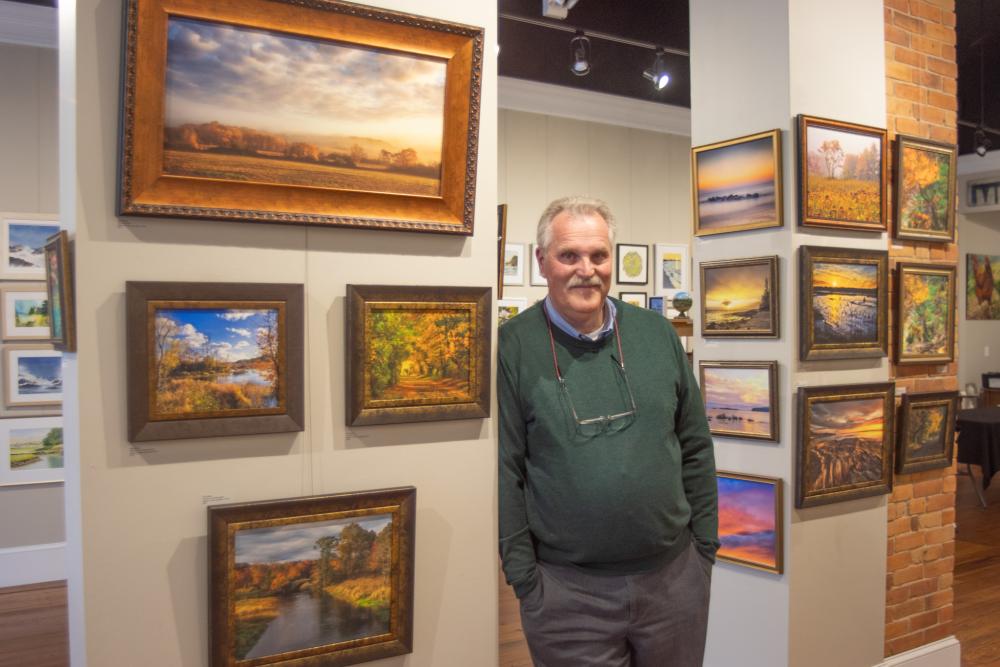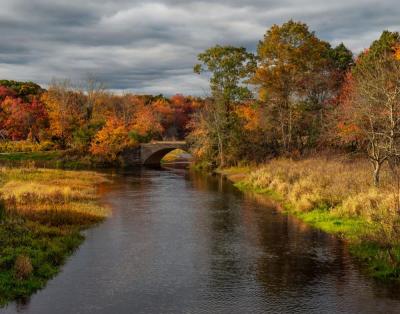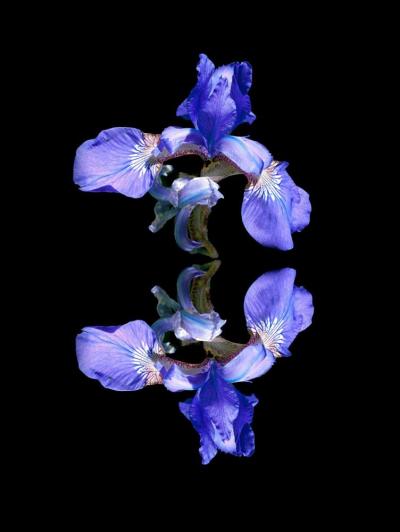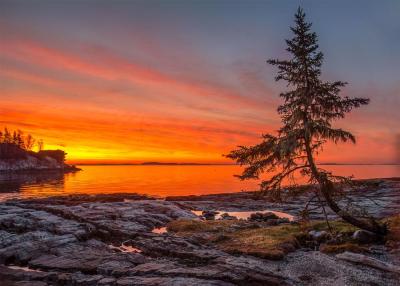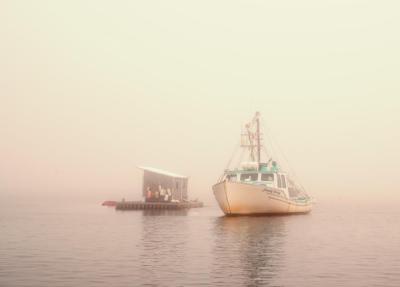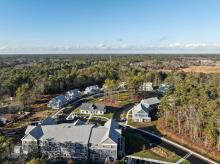Lakeville photographer captures landscapes through ‘a language of light’
MIDDLEBORO — On the walls of True Grit Art Gallery in Middleboro hang 48 breathtaking snapshots of the natural world. These are the work of Lakeville photographer Gan Barber and will be on display until May 31. Viewers got the chance to see Barber’s collection, called ‘Poems of Light,’ up close on Saturday, May 10 during a reception at the gallery.
Notable for their vibrant colors, Barber’s works strive to showcase the “sublime in the ordinary,” he said. Nemasket Week reporter Anna Milton recently sat down with him to understand how he brings his creations to light.
Q: What are some of your favorite scenes to capture around Middleboro and Lakeville?
A: This is one of the few areas where you have big sky, even if you’re not by the ocean — over the ponds, and the bogs. You have amazing variation in woods and fields. Betty’s Neck, and Assawompset Pond are beautiful spots.
Q: Where are most of your photos taken?
A: A lot of my work is from around here. There’s so much to photograph. Many of my ocean views come from Marion, Mattapoisett, Sandwich and Cape Cod as well as Islesboro, Maine. I’ve also taken a lot of photos in New Mexico and California.
Q: Are these photos enhanced? How do you get the effect of such vibrant colors?
A: I use the information from raw photos, which is a recording of what your camera sees, to develop my images. I may make the photo a little redder than my eye saw, but my eyes were constantly adjusting to make sense of bright sky, dark land, etc. When you go out in the morning and see the sunrise, the ability of your eye to see the range of colors, from darkest to lightest, is limited compared to a digital sensor. I don’t add anything, I simply develop what the camera’s sensor has captured.
Q: What is something that makes you say: ‘I have to get a photo of this?”
A: I’m always looking for the light — whether it’s the early light in the morning or the late afternoon light coming through the fall foliage. My whole work is based on a quote by the ancient Roman poet Horace that says: A picture is a poem without words.
Q: Why do you call this collection ‘Poems of Light’?
A: I consider my work lyrical, in a sense. It’s a language of light. I want my photos to tell each person their own story. That’s why I don’t like to title my work, though I have to. I don’t like to tell people what to see.
Q: What motivates you to capture the “sublime in the ordinary” as you say?
A: It’s mostly overlooked. How many people walk by something and actually see what’s there? How many times do you walk by a flower and notice the unbelievable structure of the leaves, the veining, the way the petals bend. We tend to overlook those things.
Q: Have you always had a special connection to nature?
A: No. I think taking photographs has brought that into my life. I’m not an urban photographer. I don’t go into the city to shoot people or buildings. To me, that’s all clutter.
Q: Why did you choose to focus on landscape photography?
A: When I’m working in the field, it’s very solitary. If you do portrait or wedding photography, you’re dealing with people constantly. I never felt comfortable doing that with my camera. When I tried doing it, it drained me.
Q: Do you bring your camera with you everywhere you go?
A: I don’t bring my camera with me as much now because we have a puppy and she’s a handful. She’s taken me down a few times and I don’t want to risk damaging my camera. But for years, I commuted to Stoughton for work and would always bring my camera. Maybe there were clouds in the sky on the drive home, so I’d pull over and take a picture.
Q: You don’t consider yourself a camera geek. What do you consider yourself?
A: A craftsman. I don’t even call myself a photographer. I think that kind of shortchanges the people that do photography for a living. I use photography to express my art, but I wouldn’t consider myself a photographer.
Q: Have you had formal training in photography?
A: No. I learned it all by reading and doing. I don’t do well in a classroom; I’m a hands-on learner. When I bought my first camera, I had no idea what I was doing.
Q: What are the challenges you encounter with landscape photography?
A: Timing. I do a lot of scouting. Wherever I am, I’m always looking for an interesting place, view, tree, hill, planting, etc. Then it’s a matter of deciding what time of day, what time of year would be best to capture that place in a photograph, or whether it should be in color or black and white.
Q: What do you want people to feel when looking at your work?
A: I want my work to evoke some kind of positive emotion. Even if it’s a storm cloud — maybe the emotion is awe. Or the colors make you feel good. I want people to enjoy looking at my photographs. It shouldn’t be a chore to interpret what’s there.



